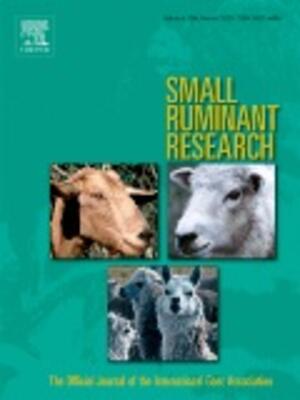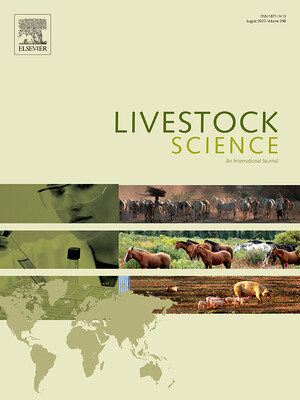
Influence of feeding sheep on oilseed cake following the consumption of tanniferous feeds
Abstract
This study evaluated the synergism between oilseed (50:50 noug (Guizotia abyssinica) and groundnut) cake (OSC) and tanniferous feeds (pods of Acacia albida and Sesbania sesban leaves) in two experiments. S. sesban has a lower content of soluble phenolics than A. albida pods (196 vs. 270 g/kg). Dietary treatments during trial 1 comprised teff (Eragrotis tef) straw given ad libitum supplemented per day with the following: 168 g of OSC alone (T1), or 100 g of OSC plus 135 g of sesbania leaves (T2) or 100 g of OSC plus either 50 (T3), 100 (T4) or 200 g (T5) of acacia pods. During trial 2 dietary treatments comprised T1, T2, T5 and an additional treatment comprised 100 g sesbania leaves plus 200 g pods which were fed to sheep as a mixture. One strategy (sequence) was to give the OSC following complete consumption of either sesbania leaves or acacia pods while the other strategy (mixture) was to mix OSC with either of these forages before feeding. The sequence strategy was used in trial 1 while both strategies were used in trial 2. Each expeiment used 30 sheep in a RCB design. During trial one incremental intake of pods resulted to linear increases (P<0.05) of live weight gain (LWG), organic matter (OM) and nitrogen (N) intake was within the range 12.0 to 12.9 g/day for diets containing OSC. Dietary treatment has no effect on the intake of teff straw, but the diet supplemented with OSC alone had lower dry matter (DM) intake (g/day; = 595) than the sesbania leaves (637; P<0.08) and acacia (694; P<0.001) diets. The digestibilities of DM, OM and neutral detergent fibre were similar among diets. Faecal N (g/day) was similar between the sesbania leaves (5.11) and acacia (5.29) diets which were higher (P<0.01) than on OSC alone. Sheep fed on the sesbania diets excreted similar urinary N as did those on acacia (4.04 3.39 g/day) but more (P<0.05) than those on OSC alone (2.9 g/day). Sheep had similar rates of LWG (g/day) on sesbania leaves (57) and OSC alone (62) which were inferior to the acacia diets (74). The difference in LWG between sesbania and acacia groups was small using the mixture strategy (10 g/day; P>0.05) and substantial using the sequence strategy (23 g/day; P<0.01). Similarly, the LWG differences between strategies were small (2 g/day; P>0.05) for the sesbania and large (15 g/day; P<0.05) for the acacia diets. A comparison between the OSC-acacia mixture and acacia-sesbania mixture suggested that sesbania leaves could replace OSC with rather marginal increases in LWG. The discussion was structured to explain why the sequence strategy could offer a greater chance of interaction between tannin and OSC-protein than the mixture strategy and why such interaction was most proable with A. albida pods than with S. sesban. It was concluded that it is beneficial to feed sheep on OSC following the intake of tanniferous feeds as this could support superior LWG.
Citation
Livestock Production Science;60(1): 59-69









